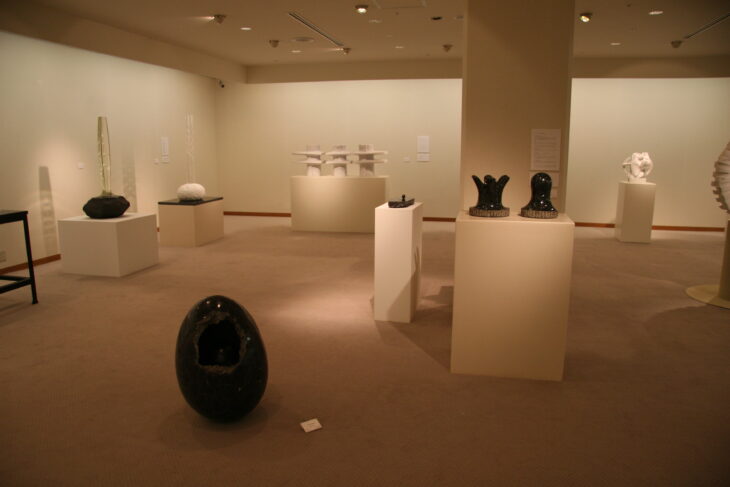How do artists determine the price of their work? I guess many of artists may have thought about it at least once.
In this issue of “Art and Pricing”, we will discuss the following,
・Outline of the price of art works
・General rules of pricing in the art industry
・How prices are actually set
I will talk about the basics of “art pricing” (price fixing), such as how it is actually done, as well as other topics that are difficult to ask about.
Also, since the term “art” has a very ranges of different prices and the value systems in each industry, I will write about the genres of “fine art” such as paintings and sculptures.
目次
Consider the meaning of pricing

Having a price on your work is an indication that you want to turn your work into money, right? Monetizing something in this way is called ”Monetization”.
If you do not want to monetize your art to be sold or priced, then you should not do it. Because the act of pricing is an indication of your willingness to live with the value of your work in terms of price.
I’ll explain it more crudely, because it’s like the price of the work = the value of your work.
So that I will share with you a little of what I know about price.
First of all, “there is no price at the stage of creating a work of art.
Why? Basically, when you are making a piece, you would not think, “I sold a similar piece for lets’s say $1,000 in the past, so it is worth $300 now when you are on the process of creation and 30% of the work is maybe done..
So when does the price start to rise?
It is when you or others have a reason to have a price on to show it to art market.
When you show your work at a gallery or an art fair, there is a need to sell, so a price is attached to everything.
On the other hand, you don’t show a price on works at biennials or art museums, do you? When you post photos of artwork on social networking sites, some photos show the price and some do not.
Both are just done for the reason of not displaying the price. Also, regardless of how many times you have sold a piece or never sold a piece, there is no price until the piece is in the place where it needs to be priced.
Price Necessity
The reason artist/gallery made a price on it is, of course, that we have the intention to sell. And if it sells, of course we will be happy and motivated, and it will provide us with an income.
If you have spent a lot of time and money on your work, you will feel even more rewarded. Also, the gallery or dealer will sell the work for you, not yourself. You set the price because you are in the business of getting a margin from them.
So far, it is a matter of course, but then, “How much should I charge?” is the point.
General Rules of Monetization of Art
Here are some general rules for pricing in the “art market” First of all, please note that there are many other ways, and that this is important to create any other ways to monetize.
First of all, there are no firm “rules or laws” for pricing.
Sometimes this is a blur in the art world and has the origin of a black box that is difficult for the general public to understand.
However, even if there are no rules, there are morals. It is called “the art world and prices are based on trust”.
The relationship of trust between the artist and the gallerist, and between the gallerist and the art collector, is what guarantees the price. Whether the work of art is valuable or not, high or low priced, if it has a price, it is priced according to the history and rarity of the art, a relationship backed by trust, created by everyone’s story.
In fact, How do you Monetize Art?

Now let’s return to the subject of works and pricing at the individual level. The point is that the price is not based on the content of the work, but on the content of the artist.
Some people may be uncomfortable with the idea that the price is determined by the content of the artist’s work when he or she has worked so hard to create and present “high quality” work to the public. But I would venture to say that it is more based on who made the work and what kind of work they made.
If you were to make exactly the same thing as a famous artist and hold a similar exhibition, the price would be different. Now, let me explain with specific examples of “your price”.
For example, let’s say you need to put a price on your work when you post your work at a graduation exhibition at an art college or on a social network service.
First of all, it is important to know if you have ever sold what you call your work in the past in the art industry. ( this excludes work that does not have your name on it, such as part-time level paintings).
Generally, a painting that can be held in one hand starts at a few hundred dollars.( depends on the medium) It does not matter if you put your heart and soul into it and spend hours painting, the price starts from cheap in the art world.
There are two reasons for this.
Why are the prices of the works in the beginning so low?
1. No big credit yet
If you have never exhibited in a gallery that is not involved in the art industry or economy, it will not affect your future much whether or not you let the price fluctuate.
However, when the artwork is not exhibited in a gallery or department store, there is a bit of a risk in putting a price tag on it. Often, artists tend to raise the price because they know how much love and hard work went into this work. However, regardless of their passion, price means the value in their industry.
Have you painted hundreds of pictures, have lots of stock, and are you willing to continue producing regardless of whether or not the work sells in the future?
Gallerists, for example, do not trust “people who are not worth the investment in the long run,” as they are likely to quit anytime soon. That is why they look at your status in the industry, i.e., your past and future, as shown by your career history.
Just because your work is good does not mean you can charge a higher price. Also, there are so many artists out there who create good works. It may be a matter of course, since they all work with sincerity.
However, there is the principle of competition, and the price cannot go up as much as everyone’s efforts.
2. the Artist’s Price must only go up steadily
As a fledgling and innocent, not yet covered with the “scruff and smell” of art industry residents and galleries, you may be underpriced. However, it is said that an artist’s price should always rise steadily and slowly.
That means having a plan for many years and slowly increasing the value of you and your work is the way to succeed.
It is natural that prices are low for those who have only been in the business for a few years, because prices are only going to go up from here on out.
Don’t dwell on the fact that you can’t raise your prices. Time flies. Before the price goes up, you have to develop the quality, quantity, management skills, and ability to withstand the pressure of this important work.
So, if someone suddenly asks you to buy a piece of work that you normally sell for $10,000 because they like your work, you should not sell it. Because once you raise the price, the next time you make a similar work, you will have to set the price at $10,000 again. But even with such an insane price hike, there’s no guarantee that you’ll have the accidental $10,000 that you had once before.
If you change the price depending on the person you are dealing with, you will lose credibility as described at the beginning of this article, and as a result, you will choke yourself early. So if you meet someone who is willing to buy your work for $10,000, it might be best to say, “My current work is about this big and costs $500, so please buy one for $500 once a month for 20 months. It would be like a dream come true if such a thing were to happen.
Summary: Analyze and create a price on your work
Money and what it means to you and your value are sensitive issues that are not easy to ask people about, or content that can be studied on the Internet. I myself have been checking the prices of others’ works at hundreds of galleries and art fairs around the world since I was a student.
In galleries, art fairs, and other places of various lines, you can basically find a price list at the venue or by asking a staff member. In this way, I can gradually accumulate data on the artist’s work, career, sales, etc., and price quotations, while assigning prices to my own works.
It is important to think about money as part of your work because you want to continue doing what you love for a long time. It is not something to be ashamed to think of at all.
Let’s keep pushing forward.





